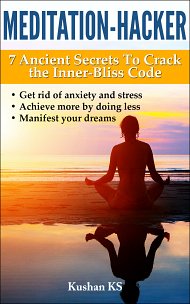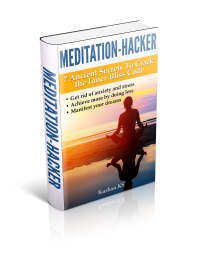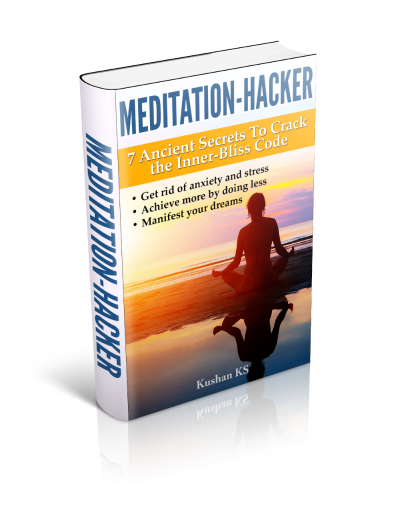Meditation for Pain Relief
"The body is your friend; it is not your enemy. Listen to its language, decode its language, and by and by, as you enter into the book of the body and you turn its pages, you will become aware of the whole mystery of life" - Osho

Doing meditation for pain relief uncouples the sensory dimension of the pain experience from the emotional, affective reaction.
This cognitive reappraisal helps in reducing the suffering caused by the pain event.
Use of fMRI (functional Magnetic Resonance Imaging) has shown that when people are emotionally distressed - anxious, angry or depressed - the right pre-frontal cortex of the brain is most active.
On the other hand, when people are happy and up-beat, activity in the brain's circuits shifts to the left pre-frontal cortex.
Dr. Richard Davidson, director of the Laboratory for Affective Neurosciences at the University of Wisconsin has found that a baseline reading of activity in the right and left pre-frontal areas provided an accurate assessment of a person's mood range.
Those people in whom the activity ranged toward the left tended to be happier and easy-going while those with more right pre-frontal cortex activity tended more toward depression and unhappiness.
The hypothesis that there is a set-point for happiness is borne out in studies of mood range, which have shown that people's self-reported happiness remained about the same even after major negative or positive life events.
Researchers found that a year after monumental life events like becoming a paraplegic by a car accident, or winning a lottery, people's happiness levels had changed little.
What is really interesting is that although we may all have a default set-point for happiness, the point can be moved.
Dr John Kabat-Zinn, founder of the Mindfulness Based Stress Reduction clinic at the University of Massachusetts Medical School, collaborated in a study with Dr Davidson to assess the impact of mindfulness meditation and found that even small doses of meditation have a positive effect on our minds.
Continuing the practice opens up new neural pathways, physically re-shaping our brains, and shifting our default set-point to the left.
In short, meditation rewires us for happiness.
Here is more proof on how doing meditation for pain relief can help us dramatically:
- Gen Hosp. Psychiatry, Kabat-Zinn J, 1982
10-week Stress Reduction and Relaxation Program to train 51 chronic pain patients in self-regulation who had not improved with traditional medical care.
The dominant pain categories were low back, neck and shoulder, and headache. Facial pain, angina pectoris, non-coronary chest pain, and GI pain were also represented.
At 10 weeks, 65% of the patients showed a reduction of >33% in the mean total Pain Rating Index (Melzack) and 50% showed a reduction of >50%.
Large and significant reductions in mood disturbance and psychiatric symptomatology accompanied these changes and were relatively stable on follow-up.
- Journal of Behavioral Medicine, Kabat-Zinn J, Lipworth L and Burney R, 1985
Ninety chronic pain patients were trained in mindfulness meditation in a 10-week Stress Reduction and Relaxation Program.
Statistically significant reductions were observed in measures of present-moment pain, negative body image, inhibition of activity by pain, symptoms, mood disturbance, and psychological symptomatology, including anxiety and depression.
Pain-related drug utilization decreased and activity levels and feelings of self-esteem increased. Improvement appeared to be independent of gender, source of referral, and type of pain.
A comparison group of pain patients did not show significant improvement on these measures after traditional treatment protocols.
- The Clinical Journal of Pain, 1991
Chronic pain patients reduce their physician visits by 36%.
- Obstetrics and Gynecology, 1990
Women with severe PMS have a 57% reduction in physical and psychological symptoms.
- Emotion, 2010, Perlman D, Salomons T, Davidson R, Lutz A
Differential effects on pain intensity and unpleasantness of two meditation practices.
The regulatory qualities of two different meditation practices during noxious thermal stimuli were compared:
Focused Attention (FA), directed at a fixation cross away from the stimulation, which could regulate negative affect through a sensory gating mechanism; and Open Monitoring, which could regulate negative affect through a mechanism of nonjudgmental, nonreactive awareness of sensory experience.
Long-term meditators, compared to novices, had a significant reduction of self-reported unpleasantness, but not intensity, of painful stimuli while practicing Open Monitoring (same as mindfulness).
No significant effects were found for FA.
This finding illuminates the possible regulatory mechanism of meditation-based clinical interventions like Mindfulness-Based Stress Reduction (MBSR).
Pain is an unpleasant sensory and emotional experience that can be regulated by many different cognitive mechanisms. So if you want to rid yourself of any pain, I suggest you work toward building a sustainable practice of meditation.
A great place to start would be any one of the mindfulness or breathing meditations. Or you could also choose amongst these various meditation types or techniques.
What kind of meditation for pain relief you finally decide on doesn't really matter. What matters though is that whatever gets picked, gets practised on a regular basis.
Return from Meditation for Pain Relief to Meditation Benefits

Get my book, Meditation-Hacker: 7 Ancient Secrets to Crack the Inner-Bliss Code and receive valuable information on meditation that you can use to improve the quality of your health and life.


Comments
I would love to hear your meditation experiences. And, if you are a beginner, your questions and apprehensions about meditation. Comment below or contact me directly through the navigation bar on the left of this page.